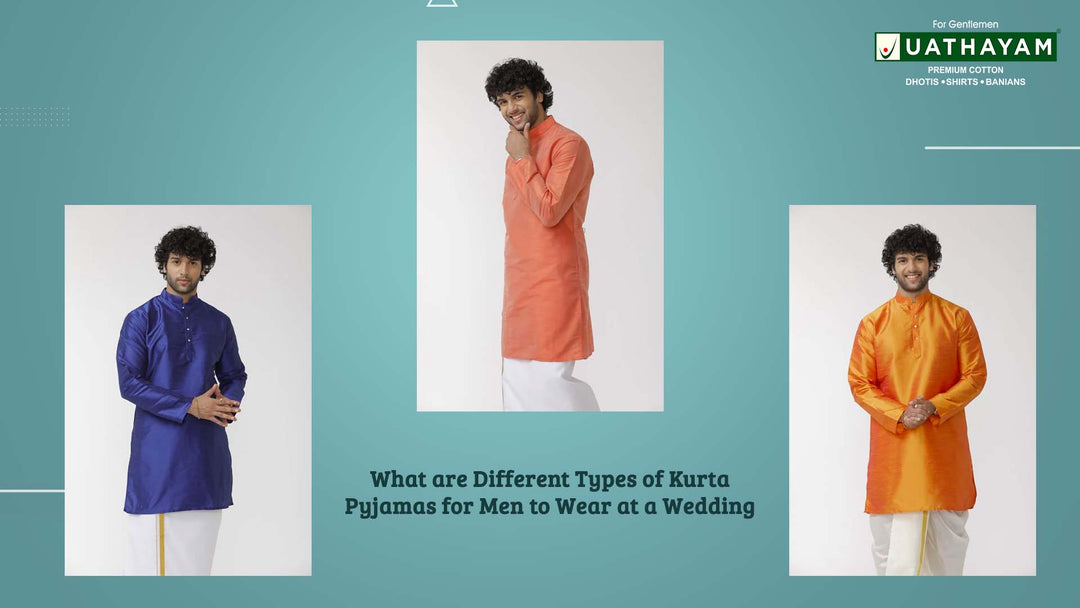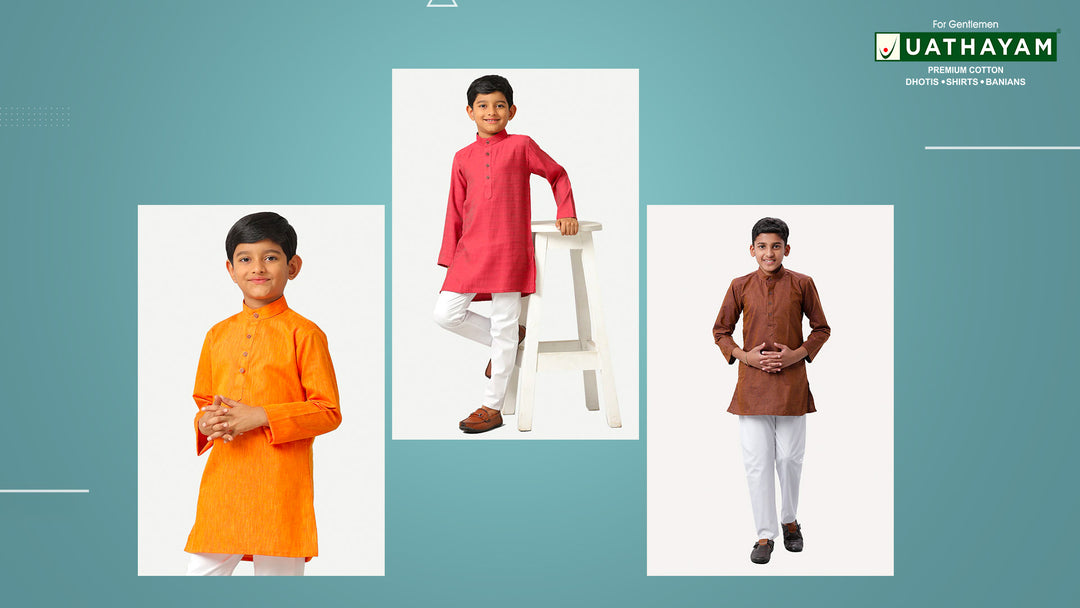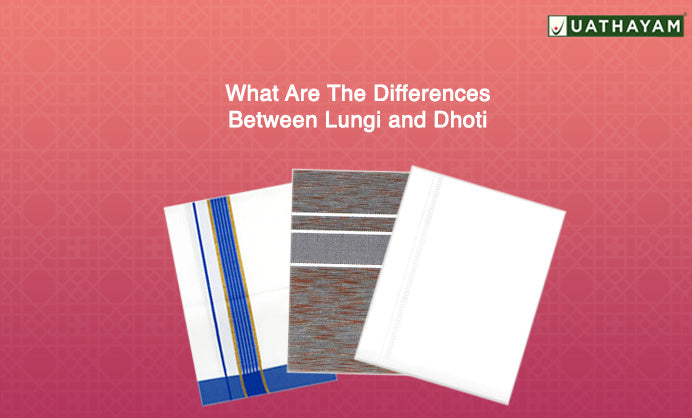Indian Wedding Attire For Grooms
Weddings in India are not just ceremonies but celebrations of tradition, culture, and luxury. When it comes to Indian weddings, the groom's attire stands as a symbol of tradition and style. Every piece worn carries cultural significance, blending heritage with modern fashion sensibilities.
In this comprehensive guide, we delve into the intricate details of the perfect ensemble, exploring the nuances of wedding dhotis and the timeless allure of wedding white shirts.

The Elegance of Wedding Dhotis
Traditional Craftsmanship:
Crafted with precision and tradition, the wedding dhoti is special in Indian weddings. These garments are a seamless blend of artistry and cultural significance, often handwoven with intricate patterns that tell stories of heritage and craftsmanship. The choice of fabric, ranging from silk to cotton, adds to the richness of this traditional attire.
Versatility in Design:
The beauty of the wedding dhoti lies in its versatility. From classic plain dhotis to those adorned with zari work, embroidered borders, or subtle motifs, grooms have many options. Each design narrates a unique tale, allowing the groom to express individuality on this occasion.
Colour Palette Selection:
While white remains a timeless choice, contemporary trends see a surge in grooms embracing various colours for their wedding dhotis. Soft pastels, regal maroons, and deep blues are gaining popularity, provid
ing a refreshing twist to the traditional wedding palette.
Importance of Wedding Dhoti in Indian Wedding
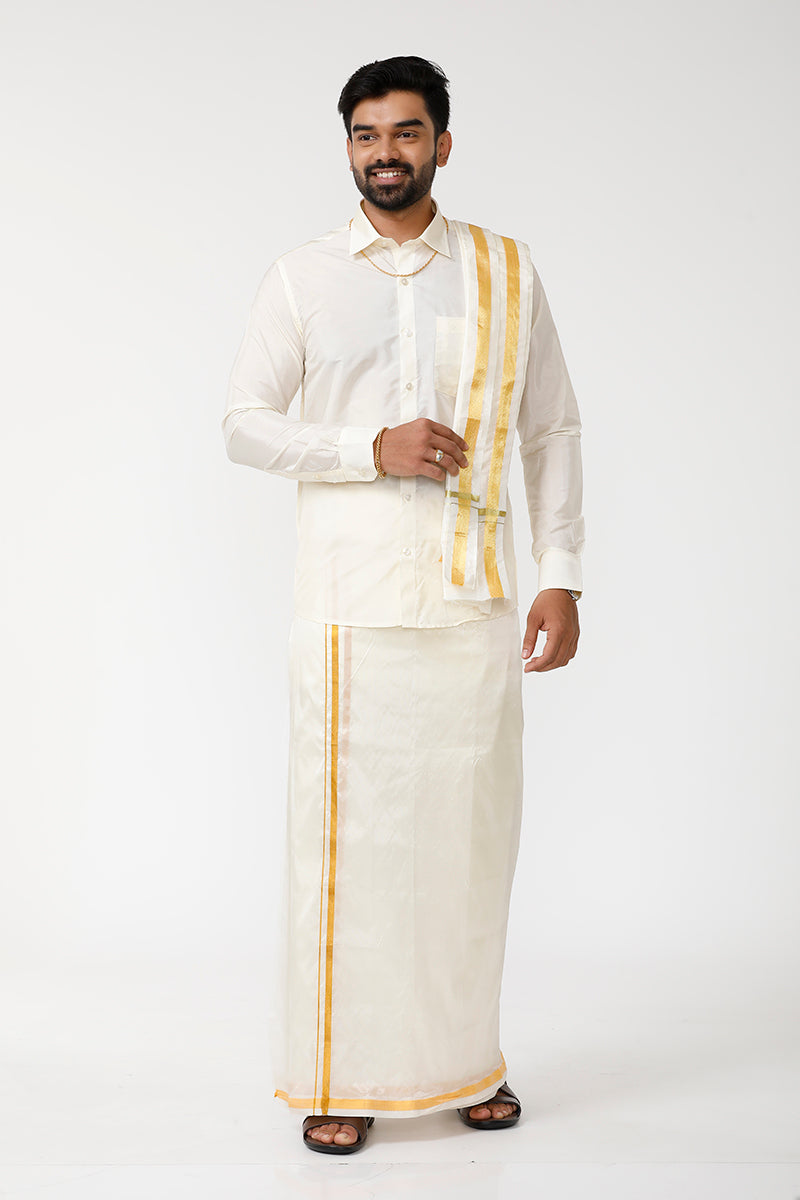
The wedding dhoti roots deeply embedded in Indian tradition, signify more than just a piece of clothing. It encapsulates centuries of cultural heritage, reflecting the diverse customs and rituals that make Indian weddings a spectacle of colour and tradition.
Indian weddings are vibrant celebrations steeped in tradition, and each element holds profound significance. The wedding dhoti symbolises heritage, elegance, and cultural legacy.
Exploring its multifaceted importance unveils a rich tapestry of customs and beliefs:
A Tribute to Tradition: The Heritage of the Wedding Dhoti
The wedding dhoti, a traditional attire, symbolises more than just a piece of clothing. It embodies the cultural heritage and values passed down through generations. Its significance lies in its craftsmanship and the artistry involved in its creation.
Handcrafted with intricate designs and often adorned with embellishments, the dhoti epitomises the rich cultural tapestry of India.
Emblem of Elegance: The Distinctive Style
Adorning the groom in a meticulously draped dhoti exudes a sense of sophistication and grace. Its elegance lies in its simplicity, yet it commands attention with its understated grandeur. The fabric, colours, and how it is worn vary across regions, adding to its allure and making it a vibrant representation of diversity within unity.
Symbolism and Rituals: The Sacred Threads
Beyond its aesthetic appeal, the wedding dhoti holds profound symbolism. It signifies purity, sanctity, and auspicious beginnings. The rituals associated with donning the dhoti during the wedding ceremony symbolise the groom's readiness to embrace the responsibilities and commitments of married life, creating a spiritual connection with the vows taken.
Modern Relevance and Evolution:
Despite changing trends, the importance of wedding dhoti in Indian Wedding ceremonies remains intact. Modern iterations blend traditional designs with contemporary aesthetics, ensuring its relevance in today's weddings.
Preserving Culture: Keeping Traditions Alive
In a rapidly changing world, the wedding dhoti stands as a beacon of tradition, a reminder of the roots and values that form the foundation of Indian culture. Its continued presence in weddings underscores the commitment to preserving age-old customs, ensuring they endure for generations.
The Classic Allure of Wedding White Shirts
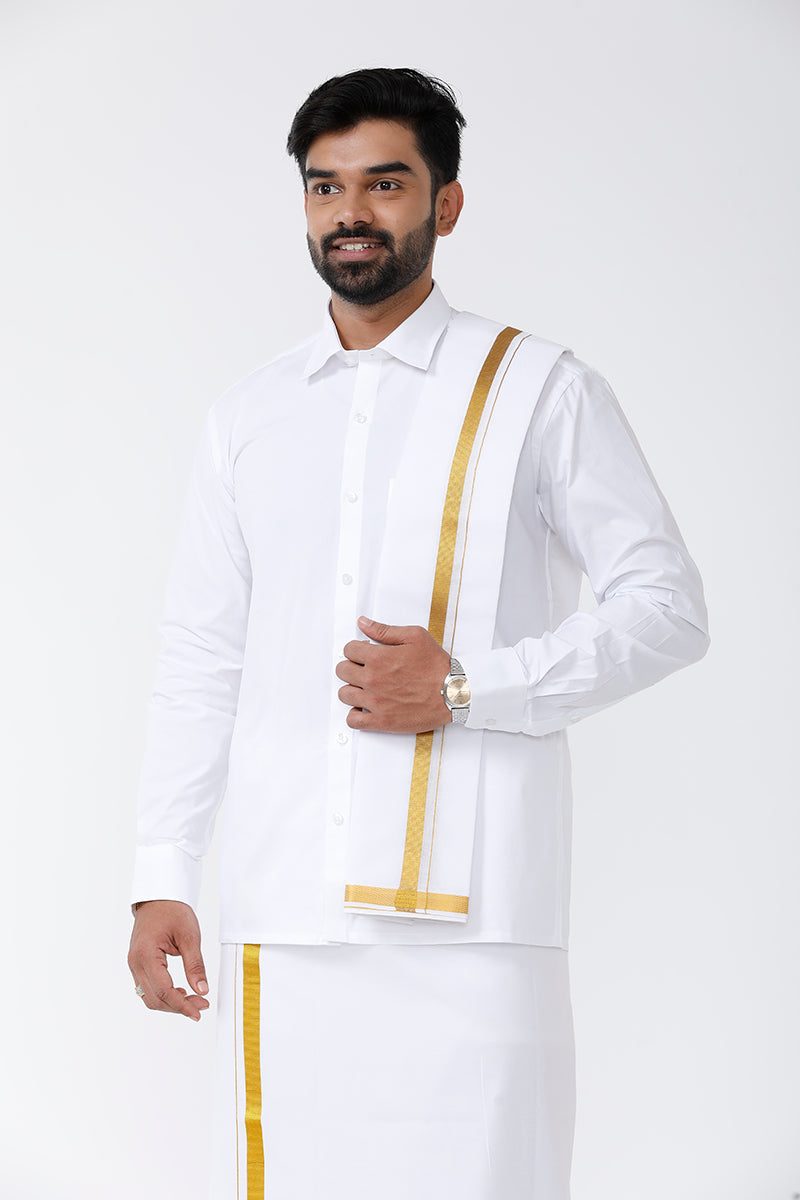
Tailoring Excellence:
No ensemble is complete without the perfect accompaniment, and the wedding white shirt is a classic choice that stands the test of time. Impeccably tailored, these shirts are designed to complement the wedding dhoti, creating a harmonious blend of sophistication and style. Quality craftsmanship ensures a fit that is both comfortable and refined.
Embellishments and Details:
What sets the wedding white shirt apart are the subtle embellishments and details. Intricate embroidery, delicate lacework, and well-crafted buttons add a touch of luxury, elevating the sweater from a mere accessory to a statement piece. Grooms can choose from styles, from traditional Nehru collars to contemporary Mandarin collars, to suit their tastes.
A Canvas for Personal Expression:
While white exudes an aura of purity and simplicity, it also serves as a canvas for personal expression. Grooms can opt for shirts with minimalistic details for a timeless look or experiment with bolder choices for a modern twist. The wedding white shirt transcends trends, making it a versatile and enduring choice for grooms across generations.
Importance of Wedding white shirt in Indian Wedding
In the mosaic of cultural traditions that adorn Indian weddings, the attire donned by the groom is steeped in symbolism. The choice of a white shirt, though not traditionally native to Indian ceremonial clothing, has begun to manifest its presence in contemporary weddings.
Symbolism in White:
The pristine allure of the white shirt carries profound symbolism across various cultures. In Western traditions, it symbolizes purity, innocence, and the commencement of a new chapter. Its adoption in Indian weddings mirrors these sentiments, signifying the purity of the union and the beginning of a new journey for the couple. This subtle yet impactful symbolism has led to its integration into the rich tapestry of Indian wedding attire.
Harmony in Contrast:
The juxtaposition of the white shirt against the vibrant hues of traditional Indian attire creates a captivating contrast. The simplicity of the white shirt accentuates the intricate designs and vibrant colours of the accompanying ensemble, creating a harmonious visual spectacle. This contrast symbolises the harmonious union of different elements - a metaphor for the coming together of two individuals and their families.
Versatility and Timelessness:
Beyond symbolism, the white shirt boasts versatility and timelessness. Its understated elegance seamlessly blends with traditional Indian outfits, allowing many style combinations. Whether paired with a vibrant sherwani or a classic kurta, the white shirt exudes a timeless appeal, transcending fleeting fashion trends.
Influence of Media and Celebrities:
The influence of media and celebrities has amplified the integration of the white shirt into Indian weddings. High-profile weddings showcased in magazines and social media platforms often feature grooms adorning a white shirt, normalizing and popularizing this sartorial choice among the masses.
Practicality and Comfort:
Moreover, adopting a white shirt at an Indian wedding is not merely rooted in symbolism and aesthetics; practicality and comfort also play pivotal roles. In the whirlwind of ceremonies and rituals, a white shirt offers comfort, allowing the groom to navigate the festivities quickly and gracefully.
Embracing Change Without Forgetting Tradition:
Incorporating a white shirt into Indian wedding attire is a testament to the dynamic nature of traditions. It exemplifies the ability to adapt and embrace change while cherishing the essence of age-old customs. This harmonious blend of tradition and modernity reflects the evolving ethos of contemporary Indian weddings.
Conclusion
The wedding attire for grooms in Indian ceremonies transcends mere clothing; it's a canvas of tradition, culture, and elegance. From the intricately woven wedding dhotis to the timeless allure of wedding white shirts, each garment tells a story of heritage and sophistication.
Embracing the fusion of tradition and modernity, coupled with attention to detail in accessories and personalisation, creates an ensemble that embodies the essence of the groom's journey towards marital bliss.




